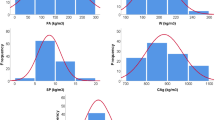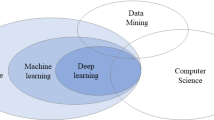Abstract
Confining damaged concrete columns using fibre-reinforced concrete (FRP) has proven to be effective in restoring strength and ductility. However, extensive experimental tests are generally required to fully understand the behaviour of such columns. This paper proposes the artificial neural networks (ANNs) models to simulate the FRP-repaired concrete subjected to pre-damaged loading. The models were developed based on two databases which contained the experimental results of 102 and 68 specimens for restored strength and strain, respectively. The proposed models agreed well with testing data with a general correlation factor of more than 97%. Subsequently, simplified equations in designing the restored strength and strain of FRP-repaired columns were proposed based on the trained ANN models. The proposed equations are simple but reasonably accurate and could be used directly in the design of such columns. The accuracy of the proposed equations is due to the incorporation of most affecting factors such as pre-damaged level, concrete compressive strength, confining pressure and ultimate confined concrete strength.






Similar content being viewed by others
References
Wu YF, Yun Y, Wei Y, Zhou Y (2014) Effect of predamage on the stress–strain relationship of confined concrete under monotonic loading. J Struct Eng 140(12):04014093
Li YF, Lin YJ, Chen CW, Lin CT (2007) Theoretical and experimental studies on repaired and rehabilitated reinforced concrete frames. Can J Civ Eng 34(8):923–933
Iacobucci RD, Sheikh SA, Bayrak O (2003) Retrofit of square concrete columns with carbon fiber-reinforced polymer for seismic resistance. ACI Struct J 100(6):785–794
Li G, Hedlund S, Pang SS, Alaywan W, Eggers J, Abadie C (2003) Repair of damaged RC columns using fast curing FRP composites. Compos Part B Eng 34(3):261–271
Bousias SN, Triantafillou TC, Fardis MN, Spathis L, O’Regan BA (2004) Fiber-reinforced polymer retrofitting of rectangular reinforced concrete columns with or without corrosion. Struct J 101(4):512–520
Gu DS, Wu G, Wu ZS, Wu YF (2010) Confinement effectiveness of FRP in retrofitting circular concrete columns under simulated seismic load. J Compos Constr 14(5):531–540
Saadatmanesh H, Ehsani MR, Jin L (1997) Repair of earthquake-damaged RC columns with FRP wraps. ACI Struct J 94:206–215
Peled A (2007) Confinement of damaged and nondamaged structural concrete with FRP and TRC sleeves. J Compos Constr 11(5):514–522
Tsonos AG (2008) Effectiveness of CFRP-jackets and RC-jackets in post-earthquake and pre-earthquake retrofitting of beam–column subassemblages. Eng Struct 30(3):777–793
Wu X, Ghaboussi J, Garrett JH (1992) Use of neural networks in detection of structural damage. Comput Struct 42(4):649–659
Hadi MN (2003) Neural networks applications in concrete structures. Comput Struct 81(6):373–381
Perera R, Arteaga A, De Diego A (2010) Artificial intelligence techniques for prediction of the capacity of RC beams strengthened in shear with external FRP reinforcement. Compos Struct 92(5):1169–1175
Hanna AS, Senouci AB (1995) NEUROSLAB–neural network system for horizontal formwork selection. Can J Civ Eng 22(4):785–792
Chen KM, Tsai KK, Qi GZ, Yang ICS, Amuii F (1995) Ned network for structure control. J Comput Civ Eng ASCE 9(2):168–176
Kang HT, Yoon CJ (1994) Neural network approaches to aid simple truss design problem. Microcomput Civ Eng 9:211–218
Elkordy MF, Chang KC, Lee GC (1994) A structural damage neural network monitoring system. Microcomput Civ Eng 9:83–96
Issa RRA, Fletcher D and Cade RA (1992) Predicting tower guy pretension using a neural network. In: Proceedings of the 8th conference of computing in civil engineering, ASCE, New York, pp 1074–1081
Chen SS, Shah K (1992) Neural networks in dynamic analysis of bridges. In: Proceedings of the 8th conference of computing in civil engineering, Dallas, Texas, pp 1058-–1065
Pratt D, Sansalone M (1992) Impact-echo signal interpretation using artificial intelligence. ACI Mater J 89(2):178–187
Moselhi O, Hegazy T, Fazio P (1992) Potential applications of neural networks in construction. Can J Civ Eng 19:521–529
Hegay T (1993) Integrated bid preparation with emphases on risk assessrnent using neural networks. Ph.D. Thesis, Centre for Building Studies, Concordia University, Montreal, Quebec
Naderpour H, Kheyroddin A, Amiri GG (2010) Prediction of FRP-confined compressive strength of concrete using artificial neural networks. Compos Struct 92(12):2817–2829
Jalal M, Ramezanianpour AA (2012) Strength enhancement modeling of concrete cylinders confined with CFRP composites using artificial neural networks. Compos Part B Eng 43(8):2990–3000
MATLAB R2012b. [Computer software]. The Math Works, Natick, MA
Hornik K, Stinchcombe M, White H (1989) Multilayer feedforward networks are universal approximators. Neural Net 2(5):359–366
Pham TM, Hadi MN (2014) Predicting stress and strain of FRP-confined square/rectangular columns using artificial neural networks. J Compos Constr 18(6):04014019
Ma CK, Awang AZ, Omar W (2014) Slenderness effect and upper-bound slenderness limit of SSTT-confined HSC column. Int J Struct Eng 5(3):279–286
Ma CK, Awang AZ, Omar W (2016) Flexural ductility design of confined high-strength concrete columns: theoretical modelling. Measurement 78:42–48
Chau-Khun M, Awang AZ, Omar W, Pilakoutas K, Tahir MM, Garcia R (2015) Elastic design of slender high-strength RC circular columns confined with external tensioned steel straps. Adv Struct Eng 18(9):1487–1499
Ma CK, Awang AZ, Garcia R, Omar W, Pilakoutas K, Azimi M (2016) Nominal curvature design of circular HSC columns confined with post-tensioned steel straps. Structures 7:25–32
Ma CK, Awang AZ, Omar W (2014) New theoretical model of SSTT-confined HSC columns. Mag Concr Res 66(13):674–684
Khun MC, Awang AZ, Omar W (2014) Slenderness limit for SSTT-confined HSC column. Struct Eng Mech 50(2):201–214
Acknowledgements
This work was funded by Fundamental Research Grant Scheme (FRGS) from Ministry of Higher Education Malaysia (MOHE) with Grant No. 4F826. The supports from Universiti Teknologi Malaysia and MOHE are appreciated.
Author information
Authors and Affiliations
Corresponding author
Ethics declarations
Conflicts of interest
The authors declare that they have no conflicts of interest.
Rights and permissions
About this article
Cite this article
Ma, C.K., Lee, Y.H., Awang, A.Z. et al. Artificial neural network models for FRP-repaired concrete subjected to pre-damaged effects. Neural Comput & Applic 31, 711–717 (2019). https://doi.org/10.1007/s00521-017-3104-7
Received:
Accepted:
Published:
Issue Date:
DOI: https://doi.org/10.1007/s00521-017-3104-7




